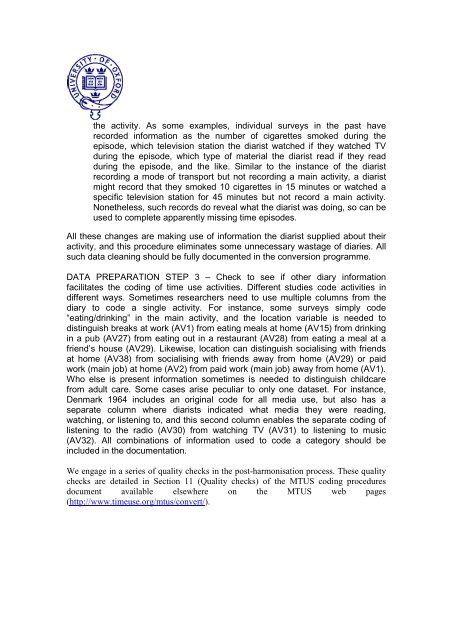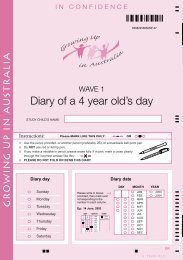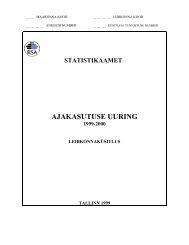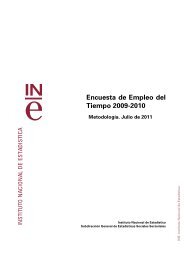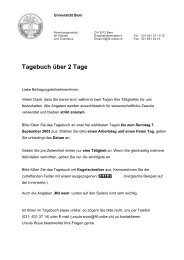multinational time use study user's guide and documentation
multinational time use study user's guide and documentation
multinational time use study user's guide and documentation
- No tags were found...
Create successful ePaper yourself
Turn your PDF publications into a flip-book with our unique Google optimized e-Paper software.
the activity. As some examples, individual surveys in the past haverecorded information as the number of cigarettes smoked during theepisode, which television station the diarist watched if they watched TVduring the episode, which type of material the diarist read if they readduring the episode, <strong>and</strong> the like. Similar to the instance of the diaristrecording a mode of transport but not recording a main activity, a diaristmight record that they smoked 10 cigarettes in 15 minutes or watched aspecific television station for 45 minutes but not record a main activity.Nonetheless, such records do reveal what the diarist was doing, so can be<strong>use</strong>d to complete apparently missing <strong>time</strong> episodes.All these changes are making <strong>use</strong> of information the diarist supplied about theiractivity, <strong>and</strong> this procedure eliminates some unnecessary wastage of diaries. Allsuch data cleaning should be fully documented in the conversion programme.DATA PREPARATION STEP 3 – Check to see if other diary informationfacilitates the coding of <strong>time</strong> <strong>use</strong> activities. Different studies code activities indifferent ways. Some<strong>time</strong>s researchers need to <strong>use</strong> multiple columns from thediary to code a single activity. For instance, some surveys simply code“eating/drinking” in the main activity, <strong>and</strong> the location variable is needed todistinguish breaks at work (AV1) from eating meals at home (AV15) from drinkingin a pub (AV27) from eating out in a restaurant (AV28) from eating a meal at afriend’s ho<strong>use</strong> (AV29). Likewise, location can distinguish socialising with friendsat home (AV38) from socialising with friends away from home (AV29) or paidwork (main job) at home (AV2) from paid work (main job) away from home (AV1).Who else is present information some<strong>time</strong>s is needed to distinguish childcarefrom adult care. Some cases arise peculiar to only one dataset. For instance,Denmark 1964 includes an original code for all media <strong>use</strong>, but also has aseparate column where diarists indicated what media they were reading,watching, or listening to, <strong>and</strong> this second column enables the separate coding oflistening to the radio (AV30) from watching TV (AV31) to listening to music(AV32). All combinations of information <strong>use</strong>d to code a category should beincluded in the <strong>documentation</strong>.We engage in a series of quality checks in the post-harmonisation process. These qualitychecks are detailed in Section 11 (Quality checks) of the MTUS coding proceduresdocument available elsewhere on the MTUS web pages(http://www.<strong>time</strong><strong>use</strong>.org/mtus/convert/).


